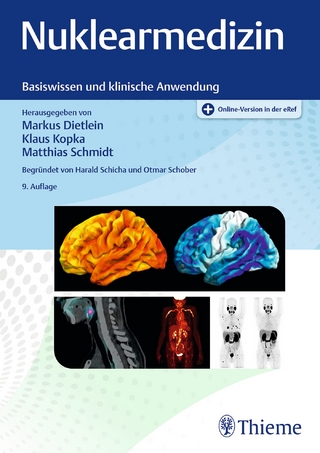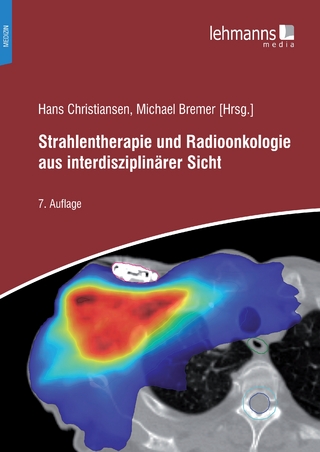
Virtual Lesions
Examining Cortical Function with Reversible Deactivation
Seiten
2002
Oxford University Press (Verlag)
978-0-19-850893-9 (ISBN)
Oxford University Press (Verlag)
978-0-19-850893-9 (ISBN)
New technologies added to previous knowledge has provided us with insights into specific parts of the brain and brain activity. The technique of "virtual lesions" - the temporary deactivation of a part of the brain, complements these techniques by facilitating experimental questions.
The study of brain lesions and their impact on cognition and behavior has been the dominant tool used to examine the complex function of the brain for the last three centuries. By testing neuropsychological deficits that correlate with a lesion in a particular part of the brain, it is possible to hypothesise about the role and cognitive function of that individual brain area. Over the past several decades, the rapid development and implementation of many new technologies to visualize brain activity has greatly augmented our understanding of brain function. However, even now there are many experimental questions that are difficult, if not impossible to answer in any way other than lesion techniques. Such studies though are not without their own challenges to overcome such as lesion-induced neuroplasticity, widespread degenerative changes, and the permanent nature of a lesion. Recent developments in different fields of neuroscience have provided tools to overcome many of the problems related to conventional lesion techniques and have succeeded to synthesizing these new approaches with a variety of new techniques to visualize brain activity on the level of individual neurons as well as on the level of cognitive performance.
These 'virtual lesions' involve the temporary deactivation of a part of the brain, by means of a range of techniques that have been recently developed. Because these deactivations are reversible, and leave the neuronal substrate unaffected, they provide a much more controllable, and rigorous way of testing subjects. These 'virtual lesion' approaches provide an essential bridge across the gap between basic research and computational approaches and provide mechanisms to test the applicability of models and their annexant hypotheses. 'Virtual Lesions' provides a state of the art guide to the full range of reversible deactivation techniques available. With each chapter written by experts in their respective field, and providing evidence of the practical applications of their methods, along with potential pitfalls, the book will serve as a valuable and practical guide for future experimentation within cognitive neuroscience.
The study of brain lesions and their impact on cognition and behavior has been the dominant tool used to examine the complex function of the brain for the last three centuries. By testing neuropsychological deficits that correlate with a lesion in a particular part of the brain, it is possible to hypothesise about the role and cognitive function of that individual brain area. Over the past several decades, the rapid development and implementation of many new technologies to visualize brain activity has greatly augmented our understanding of brain function. However, even now there are many experimental questions that are difficult, if not impossible to answer in any way other than lesion techniques. Such studies though are not without their own challenges to overcome such as lesion-induced neuroplasticity, widespread degenerative changes, and the permanent nature of a lesion. Recent developments in different fields of neuroscience have provided tools to overcome many of the problems related to conventional lesion techniques and have succeeded to synthesizing these new approaches with a variety of new techniques to visualize brain activity on the level of individual neurons as well as on the level of cognitive performance.
These 'virtual lesions' involve the temporary deactivation of a part of the brain, by means of a range of techniques that have been recently developed. Because these deactivations are reversible, and leave the neuronal substrate unaffected, they provide a much more controllable, and rigorous way of testing subjects. These 'virtual lesion' approaches provide an essential bridge across the gap between basic research and computational approaches and provide mechanisms to test the applicability of models and their annexant hypotheses. 'Virtual Lesions' provides a state of the art guide to the full range of reversible deactivation techniques available. With each chapter written by experts in their respective field, and providing evidence of the practical applications of their methods, along with potential pitfalls, the book will serve as a valuable and practical guide for future experimentation within cognitive neuroscience.
EXPLORING NEURAL CIRCUITS ; INVESTIGATING BEHAVIOUR IN ANIMALS ; PROBING THE HUMAN BRAIN
| Erscheint lt. Verlag | 5.9.2002 |
|---|---|
| Zusatzinfo | 16pp full colour plates, numerous figures and black and white photographs |
| Verlagsort | Oxford |
| Sprache | englisch |
| Maße | 173 x 249 mm |
| Gewicht | 947 g |
| Themenwelt | Geisteswissenschaften ► Psychologie ► Allgemeine Psychologie |
| Geisteswissenschaften ► Psychologie ► Biopsychologie / Neurowissenschaften | |
| Medizin / Pharmazie ► Medizinische Fachgebiete ► Neurologie | |
| Medizinische Fachgebiete ► Radiologie / Bildgebende Verfahren ► Nuklearmedizin | |
| Naturwissenschaften ► Biologie ► Zoologie | |
| ISBN-10 | 0-19-850893-X / 019850893X |
| ISBN-13 | 978-0-19-850893-9 / 9780198508939 |
| Zustand | Neuware |
| Haben Sie eine Frage zum Produkt? |
Mehr entdecken
aus dem Bereich
aus dem Bereich
Buch | Softcover (2022)
Lehmanns Media (Verlag)
39,95 €
Buch | Softcover (2022)
Facultas (Verlag)
31,10 €


